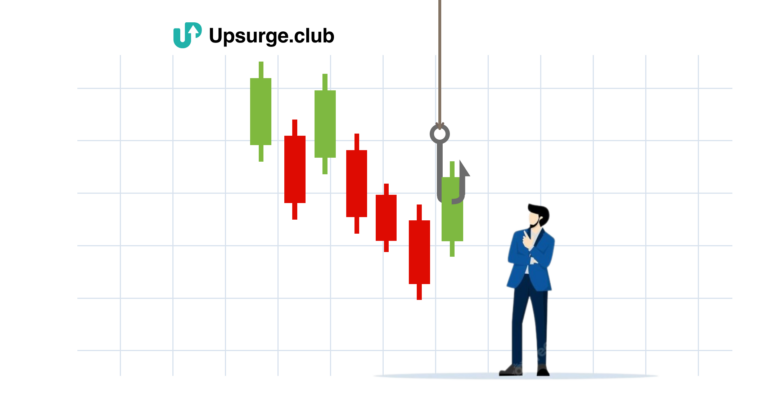Investing and trading in the stock market is a great experience. However, it requires a good understanding of the market and the company you want to invest in. To make an informed decision, two methods are used to analyze stocks: fundamental analysis and technical analysis. In this article, we will discuss the two methods, and their differences, and then determine which one is better.
What are Fundamental Analysis and Technical Analysis of Stocks?
Fundamental analysis is a method of evaluating the intrinsic value of a stock by examining its financial and economic performance.
It involves analyzing the financial statements, economic indicators, and other data to understand the company’s financial health and future growth potential. This information is then used to determine the fair value of the stock and make buying and selling decisions.
On the other hand, technical analysis is a method of evaluating securities by analyzing the statistical patterns created by the behavior of the stock’s price and volume.
This method focuses on past market data to identify trends and make predictions about price movements in the future. Technical analysts use charts, graphs, indicators, and other tools to identify patterns and make investment decisions.
Now that we are clear with the basics of what is the fundamental and technical analysis of stocks, let us see how they both differentiate from one another and can help investors/traders make an informed decision.
Difference Between Fundamental Analysis and Technical Analysis
Here are the core differences between fundamental analysis and technical analysis:
1. Data Used
The most significant difference between fundamental and technical analysis is the type of data they use. Fundamental analysis of stocks uses financial and economic data, including financial statements, economic indicators, and other relevant data to determine a stock’s intrinsic value. The perceived or calculated value reached for a stock is known as the intrinsic value.
On the other hand, technical analysis of stocks uses past market data, including price and volume information, to identify trends and predict future movements in price.
2. Time Horizon
Another critical difference between fundamental analysis and technical analysis is the time horizon they focus on. Fundamental analysis is typically a long-term approach that looks at a company’s financial health and future growth prospects. Technical analysis, on the other hand, is a short-term approach that focuses on the current market trends and predicts price or market movements in the near future.
3. Analysis Method
Fundamental analysis involves a comprehensive analysis of a company’s financial and economic performance, which includes reviewing financial statements, such as balance sheets, income statements, cash flow statements, etc.
Technical analysis, on the other hand, focuses on the patterns created by past market data that can enable predictions pertaining to future price movements. This involves analyzing price and volume data, chart patterns, and other technical indicators.
4. Philosophy
Fundamental analysis is based on the belief that a company’s financial and economic performance will reflect its stock price over the long term. Technical analysis is based on the belief that market trends repeat themselves and that past market data can be used to make a near-accurate prediction about a stock’s future price.
Fundamental and Technical Analysis: Which is Better?
The answer to this question will vary depending on the individual investor’s preferences and goals. For long-term investors, fundamental analysis may be a better choice as it provides a more comprehensive picture of a company’s financial health and future prospects. On the other hand, technical analysis is better suited for short-term traders who focus on quicker trades.
Ultimately, a combination of both methods can provide a more complete picture of the stock market and help investors make informed decisions.
Yes, fundamental and technical analysis can co-exist to make your trading decisions smarter.
For example, you can use fundamental analysis to narrow down a company or stock of interest. Then, you can follow up with technical analysis to identify the best entry and exit point for your trade.
How to Learn Technical Analysis?
You can learn both forms of analysis from research and practice, but you might also need some formal knowledge to learn technical analysis. If you want to use the combination to guide your trading decisions, you can take a course online. A course will help you form a strong foundation of technical analysis while equipping you with the necessary skills to decrypt charts and data.
If you are looking for a detailed and cost-effective way to learn technical analysis, check out our course on the Basics of Technical Analysis. Created by an expert charter, the course elaborates on everything from the basics of technical analysis to tools, charts, patterns, psychology, and more. You can complete the course in less than 4 hours and start applying the knowledge to your trades.
Conclusion
Fundamental and technical analysis are two distinct methods of evaluating securities, each with its own approach, philosophy, and emphasis. Investors may use both ways together to form a more complete picture of the stock market and make informed investment decisions.
While you can learn fundamental analysis from research and practice, technical analysis may take some effort. Upsurge.club offers an elaborate course to help you learn the basics of technical analysis and its tools, all in under 4 hours. Check it out today and begin a new era in your trading!



